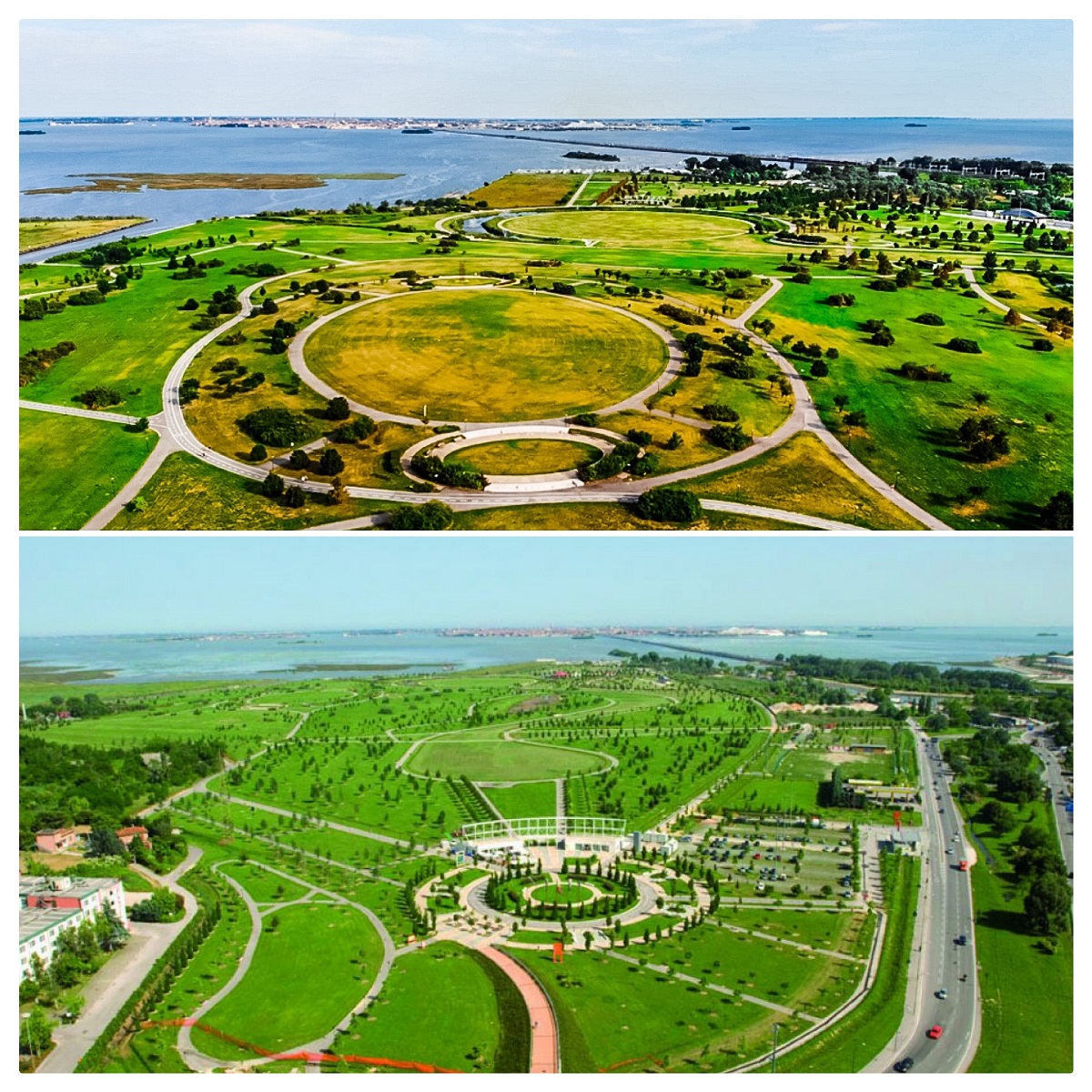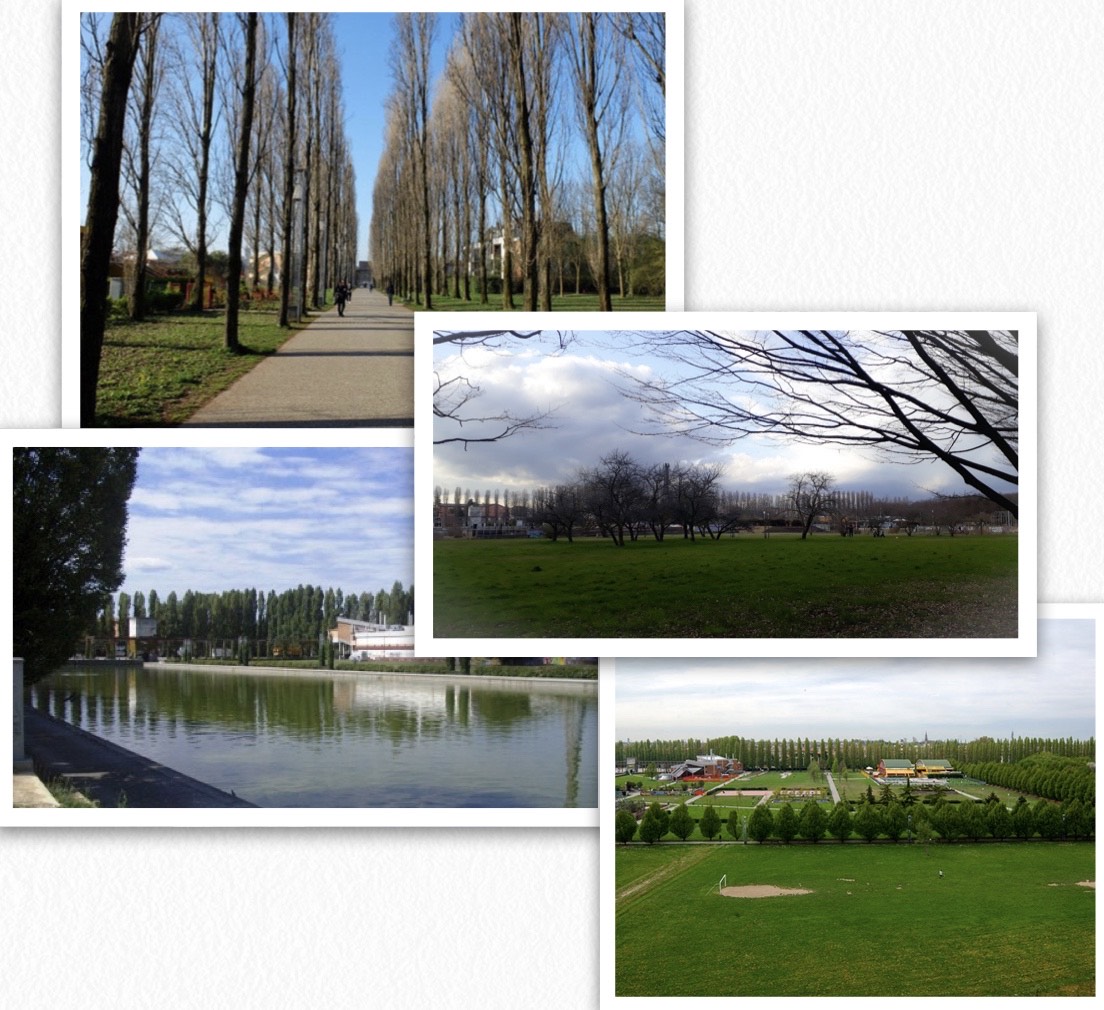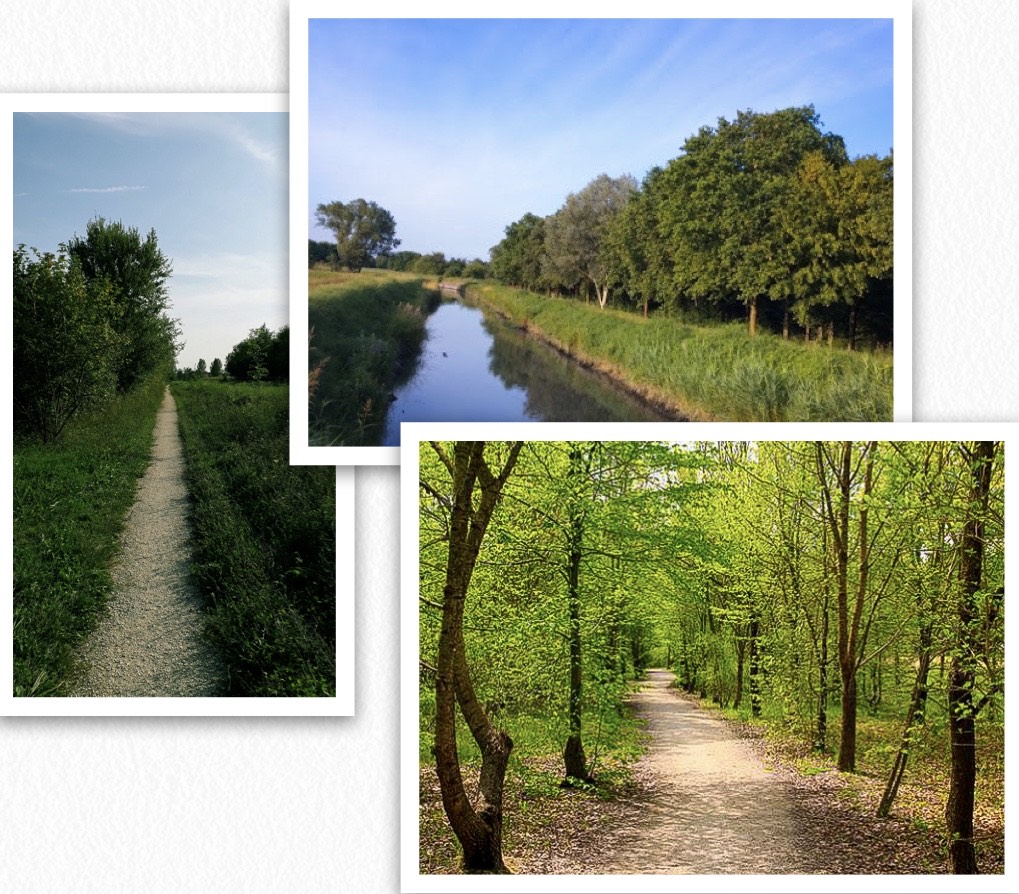The arrival of the summer season increases the desire to be immersed in nature. In Mestre there is no lack of greenery and thanks to its parks and the portions of woodland rediscovered you can enjoy a bit of relaxation just a few steps from Venice. Cross the Ponte della Libertà bridge for a few hours, you will be satisfied!
San Giuliano Park, one of the largest parks in Europe

Just crossed the Ponte della Libertà bridge there is Parco San Giuliano, a green expanse that you can already when you cross that magical stretch of road between land and water.
With an area of 700 hectares, Parco San Giuliano is the eighth largest park in Europe and the 19th largest in the world.
The history of this park is really unique. It is in fact an area that has been redeveloped from an environmental and landscape point of view. In the past this area was marshy, then in the last decades of the last century it was used as a landfill for industrial sludge and urban waste.
In 1990 the Municipality of Venice launched an international competition and in 1991 the architect Antonio Di Mambro, as representative of the winning group, started to draw up the Park's Guide Plan.
The work did not have an easy life due to some judicial reasons that blocked its progress between 1999 and 2000. The Park was finally presented to the citizens on 7 November 2003 and inaugurated in 2004. The redevelopment project continued and in 2011, after the approval of the Ministry of the Environment, work was carried out to reclaim Punta San Giuliano.
Today this can be considered, without any exaggeration, a truly unique panoramic viewpoint. From the outermost edge of the park you can in fact see Venice from a privileged position. Many people even take advantage of it to see from here the famous fires of the Redentore, a show that undoubtedly fascinates even on this side of the bridge. A magical place, Punta San Giuliano, where on the most torrid days you can not only find a bit of refreshment thanks to the light breeze coming from the lagoon, but also at the same time fill your eyes with beauty.
Where years ago waste was accumulated, thanks to the necessary reclamation work, today there is a green hill, an excellent observation point, which can be reached on foot or by bike. Nature and the urban landscape, both distant and close at the same time, have therefore been perfectly integrated into this project. A place that we recommend to see because outside the chaos of the calli, but not so far from Venice, from which it is separated only by a strip of lagoon.
Parco San Giuliano has hosted great events and concerts and in the future it is preparing for other novelties such as a cycle/pedestrian path that will connect it to Forte Marghera, starting from the university centre of Ca' Foscari in via Torino.
How to get to Parco San Giuliano: If you are coming from Venice we recommend the T1 tram that allows you to get off at the "San Giuliano" stop. If you arrive by car from Mestre there is the possibility to park in one of the large car parks in the two main entrances: Porta Rossa (Red Door) and Porta Gialla (Yellow Door).
Parco Albanese, the green heart of Bissuola

Before Parco San Giuliano, Parco Albanese was the largest green lung of the city.
Built between 1975 and 1980 on a project by a group formed by the Laris Company of Milan and the Costa-Gualdi Studio of Rome, this large green area of about 33 hectares is now divided into three ordered areas.
The north and south areas are mainly natural, the third one has structures such as a civic centre with library, a swimming pool, a gym, basketball, volleyball, five-a-side football and tennis courts. The park also offers an open amphitheatre designed to host events and shows. To complete the park there is a rose garden, a play area for children and a skating rink that will soon be covered. But that's not all.
Two artificial lakes have also been created, which in the coldest winters, when frozen, are always a very fascinating destination for some suggestive shots. The smaller lake is interesting because it is located close to a small ornithological and wildlife oasis where you can see, among other animals, beautiful peacocks.
The park is usually called Parco della Bissuola by the citizens, after the name of the district in which it is located, but it is dedicated to a man whose history has deeply marked a particular moment for the city of Mestre. Alfredo Albanese was in fact a Chief of Police who was assassinated by the Brigate Rosse on May 12, 1980 while he was engaged in investigative activities in close collaboration with figures such as General Dalla Chiesa, in a particularly dark moment for Italy. The murder took place not far from where the park stands today, it was therefore necessary to remember his sacrifice with a concrete gesture.
Meeting place for young people, an area loved by those who practice outdoor sports, ideal for walking even on hot days, for Parco Albanese has been a feather in the cap for the city thanks to its offer and its conformation.
In recent years, however, Parco Albanese has made people talk about it because of drug dealing issues. Many raids and arrests have led the population to prefer other safer areas. Thanks to the intervention of the police and the army, today the situation seems to have normalized and the park has once again become a privileged place for the citizens.
How to get to the "Parco Albanese": From Venice by bus 24 or 24/h get off at the stop "Rielta - Parco Bissuola"; by tram get off at the stop "Pasqualigo" in via San Donà and continue towards the main entrance of the park, in via Rielta.
The Bosco di Mestre: immerse yourself in nature a few steps from the town

It sounds strange, but that's how it is: in Mestre there is a wood, or rather more than one!
Its history is not at all recent, but it begins in a distant era. Documentation on the subject dates back to 1300 when the lush Bosco di Valdemar was mentioned for the first time. It is, however, an even more ancient wooded area that was certainly already present in ancient times. In fact, it was part of the Selva Fetontea described by the Latin poet Maziale and which at that time covered the coast from Aquileia to Ravenna.
In the course of time the wooded hectares were cared for and used by the local community at the will of the Republic of Venice.
In the course of time part of the area has been demolished, there is evidence of this in the period around the First World War and 1944 when it was razed to the ground by German troops. Fortunately the forest was cut, but not cleared, allowing the vegetation to grow back.
Today the Bosco di Mestre is composed of several areas: The Carpenedo Wood, the Osellino Wood, the Campalto Wood and the vast Querini areas with the Ottolenghi, Franca and Zaher Woods.
The idea of giving shape to a large forest in Mestre, along its urban belt, was born in 1984 when the local environmental movement opposed the project to build a new city hospital near the wood of Carpenedo.
With its 230 hectares managed by the institution Ente Boschi e Parchi, this ambitious project focuses on the valorisation of the mainland with a programme aimed at increasing biodiversity, renaturalising watercourses, creating leisure and recreation areas, recovering historical memory and strengthening the identity of the city.
Every wooded area recovered has been designed for pedestrian and cycle paths and with stretches also dedicated to horseback riding.
Along the paths, thanks to information panels it is possible to get to know the different species of plants and animals that can be seen and encountered in the woods. A way to immerse yourself in nature in an active and conscious way.
Bosco Zaher, Bosco Ottelenghi and Bosco Franca are the ones we recommend the most because, besides being the biggest and with a very well studied design, they also bring with them an important value: that of memory.
Bosco Zaher is in fact dedicated to the memory of an Afghan boy, Zaher Rezai, who left his country in 2008 with little money in his pocket, facing a difficult journey of six thousand kilometres with the hope of reaching a country where he could live a better life. He disembarked from a ship in the port of Venice and hid under a truck to cross the border. Unfortunately, however, the young Zaher lost his life, crushed by the wheels of the vehicle, on a road not far from where the forest dedicated to him stands. Next to the body was found a transparent bag with a few dear objects inside and the sheets of a diary with sincere and touching phrases that speak of hope and verses of poems in ancient Persian.
Just inside the wood there is a sculpture - installation by Luigi Gardenal that collects the words and images found in Zaher's notebook.
This wooded area of 50 hectares has within it the pre-existing wooded hedges of plane trees, locusts, field elms and white willows, preserved and enhanced as evidence of a past in which wicker, faggots and wood could be obtained from this vegetation.
Some areas have instead been maintained as lawns, to increase ecological diversity and water reservoirs have been created instead to obtain a sufficiently humid environment for species suitable for this ecosystem.
Interesting is the presence of a stretch of the coastal horse trail Mestre-Jesolo that passes right through Bosco Zaher, for a length of 1.9 km.
Bosco Ottolenghi is situated on the opposite side of via Altinia, the same road where Bosco Zaher also opens up, in the hamlet of Favaro Veneto. Set between the Mestre-Trieste railway line, the Dese river and the village of Favaro Veneto, this stretch of wood sees its accesses along Via Forte Cosenz, where the remains of the military structure of the same name are located, which is part of the entrenched camp of Mestre.
The Ottolenghi Wood covers 30 hectares and was the first stretch to be opened to the public. Owned by the Querini Stampalia Foundation, it is now in usufruct of the Municipality of Venice.
The area is dedicated to Adolfo Ottolenghi, a man of dialogue and culture who from 1912 to 1944 was the chief rabbi of the Jewish community of Venice. Together with many of his fellow citizens, Adolfo Ottolenghi was also arrested, deported and killed at Auschwitz by the German hand. Inside the wood, in memory of the Venetian rabbi, there is a wooden plaque designed by Guido Zordan.
A silent place where the real protagonist is the sound of nature, capable of making you live a quiet personal moment of reflection.
The third area, Bosco Franca, adjacent to Bosco Ottolenghi blends almost naturally with this one.
This stretch of 22 hectares is dedicated to Franca Jarach, an eighteen-year-old Argentine girl, desaparecida, who was killed together with other students of the National High School of Buenos Aires, during the military dictatorship of the 1970s. A touching story that of Franca, which represents one of the many lives broken in Argentina during that period.
In the wood, it was therefore decided to dedicate a natural element like a hedge to Franca Jarach and all the Argentine desaparecidos.
From a naturalistic point of view, Bosco Franca presents three different ecosystems:
- the forest, created between 2003 and 2006 with vegetation typical of the Po Valley.
-wetlands to purify the water flowing into the lagoon and create a suitable environment for waterfowl and amphibians .
-the lawn, crossed by a pleasant cycle-pedestrian path.
Parks and Woods in Mestre are not lacking. In addition to those described, there are also other green areas in the city, some even in the centre. A way to give the inhabitants the opportunity to live in every season a few moments away from city traffic. Enhancing places like woods and parks is certainly an ambitious project, but necessary because it is precious for the inhabitants, as well as for the environment. An important example that teaches how the urban fabric and the natural ecosystem can coexist, almost to the point of merging together.
For more information:
https://www.comune.venezia.it/it/boscograndiparchi










Lascia un commento